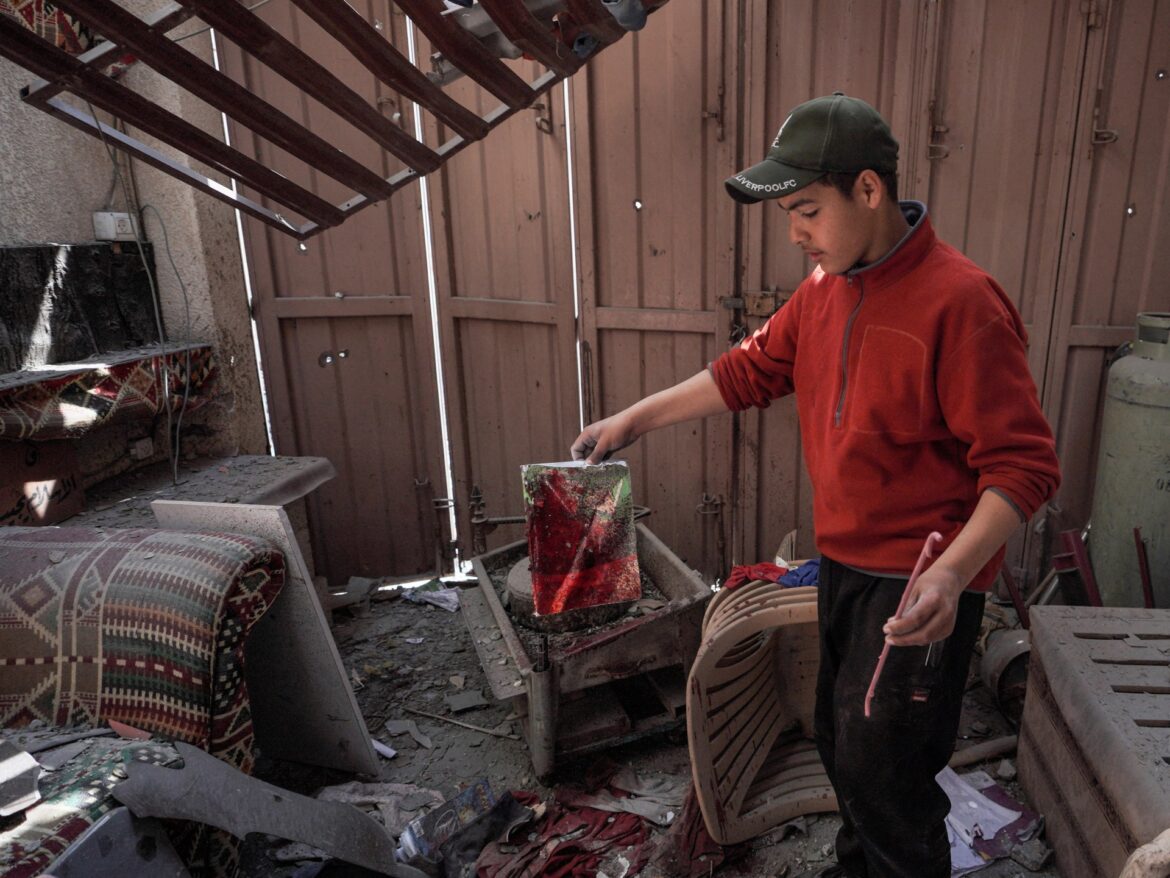It is located in the center of the Gaza Strip, next to the Al-Maghazi and Al-Nuseirat camps, south of Gaza City. It was established in the 1950s to host refugees who were living in British army barracks and tents, and who came from cities east of Gaza such as Fallujah.
It was given this name in reference to “Khirbet al-Bureij” located within the lands of the Hanajra tribe. It is managed by the United Nations Relief and Works Agency for Palestine Refugees (UNRWA) and supervises its work.
Location and space
Al-Bureij is a relatively small camp. It was established on an area of 528 dunums (a dunum equals a thousand square metres), while its current area is 5,300 dunums, which constitutes 10% of the area of the Central Governorate, which amounts to 56.41 square kilometers.
The camp is 9 kilometers from the south of Gaza City, and is located in the middle of the Strip next to the Maghazi camps to the south and Nuseirat camps to the west. It is bordered to the north by the Gaza Valley, and to the east by the “Green Line”, and through it passes the railway linking Egypt and Lod (the Qantara-Haifa railway line), in addition to The paved international road linking Gaza and Cairo.
Population
The population of the camp until mid-2023, according to estimates by the Central Bureau of Statistics, is 32,743 people, whose origins go back to the villages of Al-Majdal, Ashdod, and Jaffa.
The camp is known for its overcrowding, small area, and lack of necessary facilities. Due to its proximity to Wadi Gaza, which has a sewage pond, the United Nations Environment Program says that this has caused watery and bloody diarrhea, especially among children, and that 90% of the camp’s water is unfit for human consumption.
Historical stations
The Bureij area was formerly a military barracks for the English army during the British Mandate over Palestine, and several military buildings belonging to it are still standing in the camp and inhabited by some families.
UNRWA established the camp on the ruins of the British military barracks after the 1948 Nakba, in an area estimated at 528 dunums, to host 13,000 refugees. The camp’s area was later reduced to 478 dunums.
The camp’s population in 1967 was about 12,786 people. UNRWA initially built residential buildings out of bricks, tiles, and tin. Over the years, the population increased and the camp expanded, and the number of buildings in it reached 2,653 in 2007.
As the number of refugees increased, the Egyptian governor, in cooperation with UNRWA, issued a decision to compensate land owners in the region with government land outside the camp.
In 1978, a local committee was formed in Bureij to manage electricity and water affairs. Then, in 1987, this committee turned into a village council. After the arrival of the Palestinian National Authority in 1996, a ministerial decision was issued to transform the council into a municipal council affiliated with the Ministry of Local Government.
Massacres
During its history, the camp was subjected to several massacres at the hands of the Israeli occupation, including a massacre on August 28, 1953, in which 30 camp residents were killed. The occupation threw bombs from the windows of the homes of refugees while they were sleeping, and those who fled were confronted by soldiers with small and automatic weapons.
In the massacre of December 6, 2002, 10 Palestinians and UNRWA employees were killed, and then occupation tanks entered the camp, arrested a number of Palestinians, and raided their homes with Israeli tanks and military helicopters.
On October 6, 2007, the Israeli occupation stormed the eastern part of the camp, leading to armed clashes inside it. From 1948 until 2007, more than a thousand Palestinians from the camp were martyred, which was bombed with internationally banned phosphorus bombs.
The camp was also not spared from the Israeli occupation violations that have targeted the entire Gaza Strip since October 2023, as the occupation forces committed massacres in it that led to the death of dozens and destroyed homes and dropped them on the heads of their residents.
media
Several Palestinian figures and figures hail from the Bureij camp, the most prominent of which are:
- Ibrahim Al-Maqadma
A Palestinian resistance fighter and activist, he is considered one of the most famous leaders of the Islamic Resistance Movement (Hamas) in Palestine, and one of the most important pillars of its military apparatus. He was a member of the movement’s political bureau and one of its most important thinkers.
During his years of detention in the Israeli Negev prison, Ibrahim Al-Maqadmeh founded “Youssef University,” where he developed academic curricula and educational programs for prisoners inside prisons. He was martyred on March 8, 2003, when occupation warplanes targeted his car in Gaza City.
- Muhammad Al-Durra
Muhammad Jamal Al-Durra was born on November 22, 1988 in Al-Bureij Camp, and lived in a family whose origins go back to the city of Ramla, which was occupied and expelled from it in 1948.
Muhammad Al-Durra was martyred on September 30, 2000 in his father’s arms. The footage of his martyrdom was captured on the camera of journalist Charles Anderlin from France 2, and Al-Durra became an icon in the Al-Aqsa Intifada.



